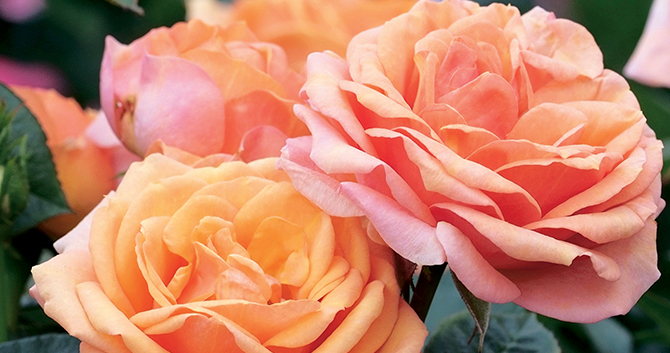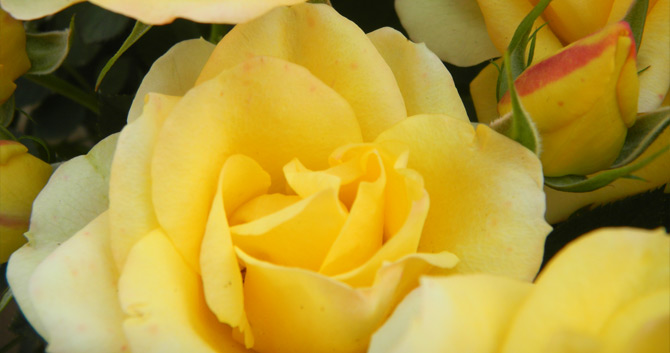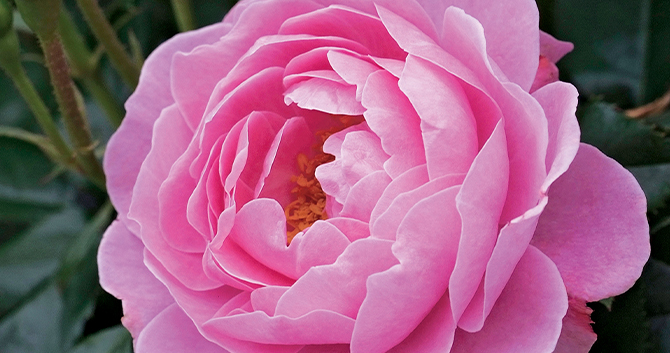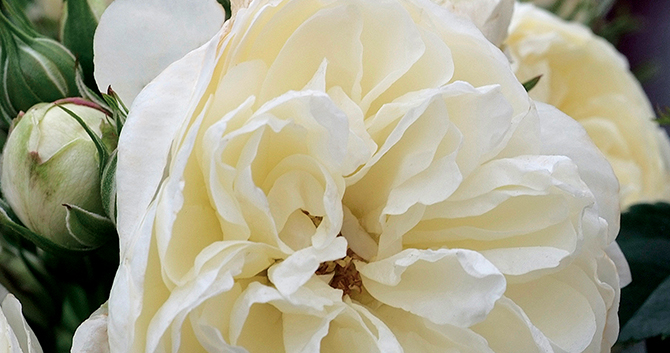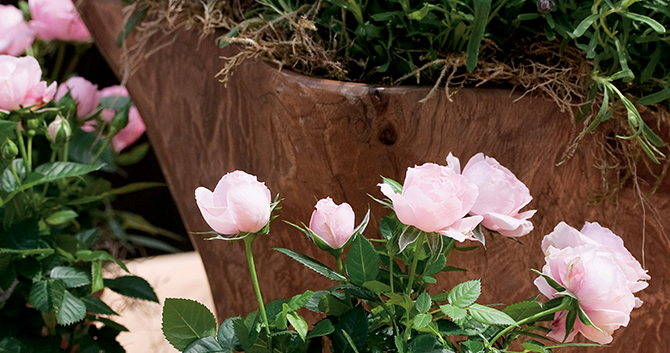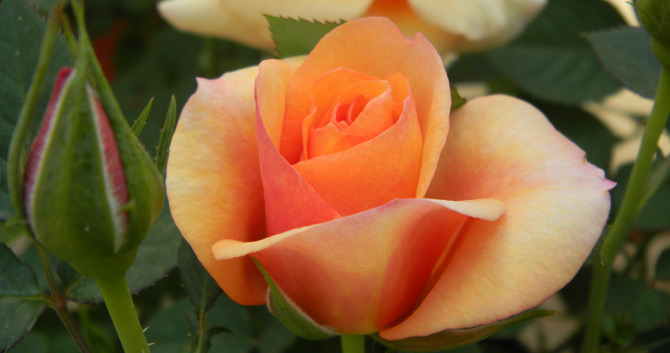Roses are the elite flowers of the garden world. For centuries, they’ve captured the hearts and imaginations of devoted fans—gardeners and romantics alike. Their delicate soft blooms amid dark glossy leaves provide the perfect blend of beauty and balance in the garden.
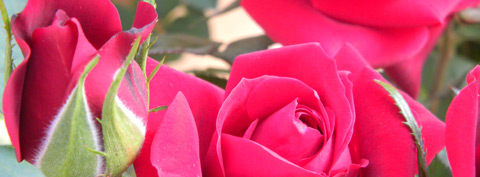 Miniature roses are a classic centerpiece for a cottage garden
Miniature roses are a classic centerpiece for a cottage garden
Dedicated rose enthusiasts have created hundreds of new hybrids in every color, shape, size, and fragrance imaginable—including the lovely and versatile miniature rose. These diminutive replicas of larger garden roses are perfectly scaled for indoor decorating, container planting, and garden borders. Compact 18-inch stems produce hundreds of blooms ranging in size from tiny ½-inch wonders that invite you to pause for closer inspection to showy 2-inch bursts of color that stop you in your tracks.
Choose your bloom
Like other roses, there is an abundance of miniature rose varieties to suit any style from refreshingly carefree to decadently indulgent, including hybrid tea roses, traditional garden roses, and floribundas. Varieties with simple, five-petal flowers add a finishing touch to any casual setting. Other varieties create a classic look with 15 petals wrapped into full double flowers. The showiest varieties have long sprays of densely packed blooms with up to 40 petals that create a lavish display.
Abundant color and fragrance
Miniature roses span nearly the full color spectrum from feminine shades of demure pastels to pure saturated colors to bold confident hues in solid, striped or variegated petals. From the purest white to the darkest red, plus pink, yellow, orange, mauve, russet, and many shades in between, mini roses bloom for up to three weeks and coordinate with any setting. And you’ll find fragrant varieties that fill your room with classic rose, citrus, sweet, or spicy notes.
 The blossoms of these diminutive beauties can be as small as ½ inch and as large as 2 inches
The blossoms of these diminutive beauties can be as small as ½ inch and as large as 2 inches
Mini roses are great companion plants for other sun-loving annuals, perennials, and bulbs. Their compact mounds of flowers in the foreground accent taller background plants like iris, gladiolas, and dahlias. For texture and fullness, combine mini roses with succulents and groundcovers. Invite hummingbirds and beneficial insects into the rose garden with salvia, lemon thyme, and lavender. They will add life to the garden and keep aphids and other pests that may appear on the leaves and flowers to a minimum.
Year-round versatility
Miniature roses are incredibly versatile adding natural charm and romance to spaces that are impractical for full-size roses. Small containers in 4-inch and 8-inch sizes brighten up a dining room, bedroom, bathroom, or office and make a fabulous centerpiece at a wedding or special event. During the long winter months when colorful plants are scarce, these beauties are readily available year-round in supermarkets, florists, or garden centers.
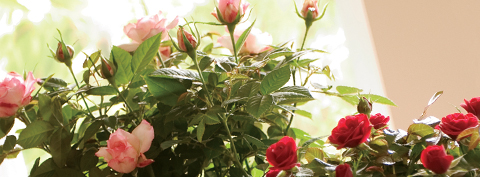 In winter, when other flowering plants are scarce, miniature roses add cheer to a sunny window ledge
In winter, when other flowering plants are scarce, miniature roses add cheer to a sunny window ledge
After they finish blooming, you can plant mini roses outdoors in a sunny perennial garden, along a walkway, in a container, or in a hanging basket. To prepare for the move from indoors to outdoors, cut back the stems about three inches above the pot, place in a bright sunny window, and keep the soil moist. New shoots will naturally develop which may need to be cut a second time after about six weeks. Move mini roses outdoors after the danger of freezing has passed.
If you don’t have a sunny spot in the garden for mini roses, you can also use them for cut flowers, drying, and potpourri. Of course, it’s also fine to throw them out guilt-free when the blooms are spent, just as you would cut flowers. Just toss the plant and soil in with the other yard waste or add to a backyard compost pile. Then recycle the pot and care tag.
Growing tips
Some people mistakenly believe that miniature roses are difficult to grow. Not true! They’re much easier to grow than you might think. They require much less space than their larger cousins, coordinate beautifully with other plants, and are hardy bloomers for their diminutive size. Most mini roses bloom continuously for two to three weeks under the right conditions. Some ever-blooming varieties are also available that bloom throughout the season.
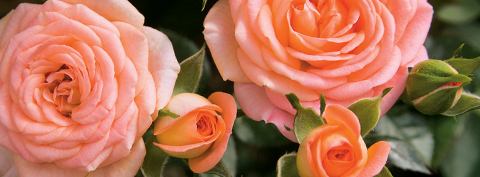 Perfect for small spaces, miniature roses add color and fragrance on a smaller, personal scale
Perfect for small spaces, miniature roses add color and fragrance on a smaller, personal scale
Mini roses thrive in bright light, moist soil, and cool temperatures. They are hardy perennials in USDA zones 5 to 9, returning year after year with bright, beautiful blooms. In other zones, mini roses make sensational annuals that you plant each spring in containers, on patios, or in garden beds and enjoy throughout the summer—right up until the first frost.
Mini roses perform equally well indoors as outdoors— just be sure to keep them away from hot windows or heat sources where they may quickly dry out. As with all flowers, avoid placing them near ripening fruits and vegetables—these emit ethylene gas that prematurely ages the flowers and may cause the leaves to drop.
Troubleshooting
As every gardener knows, there are always unwanted pests that show up to the party and mini roses are no exception. The best approach is to check for early warning signs and remove any affected areas. Consult with your local garden center to identify the pests and help resolve the problem—natural or chemical remedies are readily available for most garden needs.
Symptoms can include sticky spots on the leaves from tiny green or black aphids, stippling on the leaves and flowers from thrips, or webbing from spider mites. Other visitors that may give your roses unwanted attention include deer, rabbits, and Japanese beetles.

